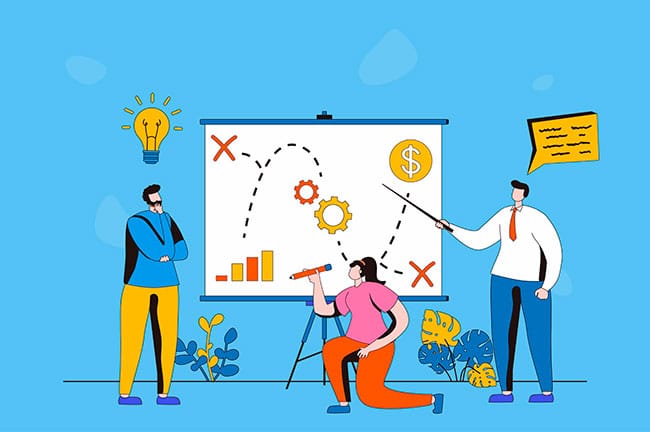Share This
Overcoming Friction and the Power of Effective Incentives

In the realm of online business, conversion rate optimization (CRO) is a critical aspect that’s often overlooked by marketing novices. Generally speaking, CRO refers to the process of enhancing the user experience and improving conversion rates on a website. One of the biggest hurdles to improving conversion rates is friction, which can manifest in a number of different ways.
In this article, we will explore how incentives can help businesses overcome many friction points while optimizing conversion rates. We will also discuss various types of incentives and how they can be leveraged effectively to enhance users’ experience. By harnessing the power of incentives and understanding how they can help improve conversion rates, businesses can continue to grow and succeed in increasingly competitive online marketplaces.
Understanding Friction in the Context of CRO
Friction can refer to any element of a website or user experience that creates difficulties or resistance for customers, hindering their ability to complete a transaction or another desired action. Friction points can significantly impact customer experience and conversion rates, as they can frustrate customers and discourage users from continuing to interact with the website or platform.
Common friction points on websites may include poor, unintuitive layouts, lengthy forms, slow load times, and convoluted checkout processes, among others. By better understanding points of friction in the customer decision-making process, businesses can identify and address aspects of their website that need improvement to help increase conversions and improve the user experience.

Strategies for Identifying and Reducing Friction
Identifying and reducing friction generally requires a strategic, multi-pronged approach that involves data analysis and user feedback to recognize the greatest areas of friction. Once identified, businesses can implement design and usability improvements to minimize friction while balancing the need for ongoing data aggregation with user-friendly experiences.
Analytics tools can help businesses track user behavior and recognize drop-off points. In contrast, user feedback can provide valuable and specific insights into customer pain points to show businesses exactly where they need to improve. Design and usability improvements, like simplifying forms and improving website load times, for instance, can minimize friction and enhance the user experience.
The Power of Incentives in Overcoming Friction
Incentives can be a powerful tool for overcoming friction and motivating customers – especially when leveraged appropriately. Incentives can be thought of as “rewards” or “benefits” that businesses offer to customers in exchange for completing a certain action. Examples of incentives that are frequently utilized to help boost conversion rates include discounts, bonuses, and ‘exclusive’ access to various products and/or services.
Incentives are most effective when they align with existing customer motivations and business goals, but it’s necessary to ensure that incentives align with customer motivations. Otherwise, they will be largely ineffective. For example, a discount may not be a compelling enough incentive for every customer – some customers may prefer exclusive access to certain products, personalized recommendations, or something else entirely. By better understanding customer preferences and motivations, businesses can design more effective incentives.

Developing and Implementing Effective Incentives
Businesses must possess a deep and comprehensive understanding of customer motivations and their target audience’s preferences to develop and implement effective incentive strategies. By conducting research, A/B testing, and analyzing customer feedback, businesses can readily identify some of the most effective incentives for their target audience.
Crafting effective incentive offers and producing compelling messaging is crucial to encourage customers to take action and improve conversion rates. Additionally, businesses must strategically place incentives throughout the customer journey and focus on friction-prone areas of the process.
Testing and Optimizing Your Incentive Strategy
One of the most essential processes in conversion rate optimization is ongoing efforts to test and improve incentive strategies. Continuous testing can help businesses identify what’s working for their target audience and what’s not.
A/B testing is a fairly common practice that can help businesses determine the effectiveness of various incentives. By randomly assigning users to different variations of your website or marketing initiatives, organizations can measure which incentives and layouts drive the most conversions.
Refining your business’s incentive strategy based on data-driven insights is an invaluable step on the journey to optimizing conversions and generally improving the customer experience.

Balancing Friction Reduction and Incentives for Maximum Conversions
Friction reduction usually involves removing obstacles that impede users from completing desired actions. In order for businesses to develop a comprehensive CRO strategy, businesses must prioritize both friction reduction and incentive optimization. By identifying and addressing sources of friction, businesses can reduce user frustration and increase the likelihood that they will respond to or participate in provided incentives.
Businesses that adapt their approach based on customer feedback are also likely to see improved conversion rates. User testing and customer feedback can provide invaluable insights into the most significant friction points as well as information about the most effective incentives.
Conclusion
By reducing friction and offering effectual incentives, businesses can generally improve customer experiences, the effectiveness of marketing campaigns and improve CRO. By focusing on both friction reduction and meaningful incentives – as well as taking care to continually assess and optimize strategies – businesses can achieve higher conversion rates and drive business growth and success.